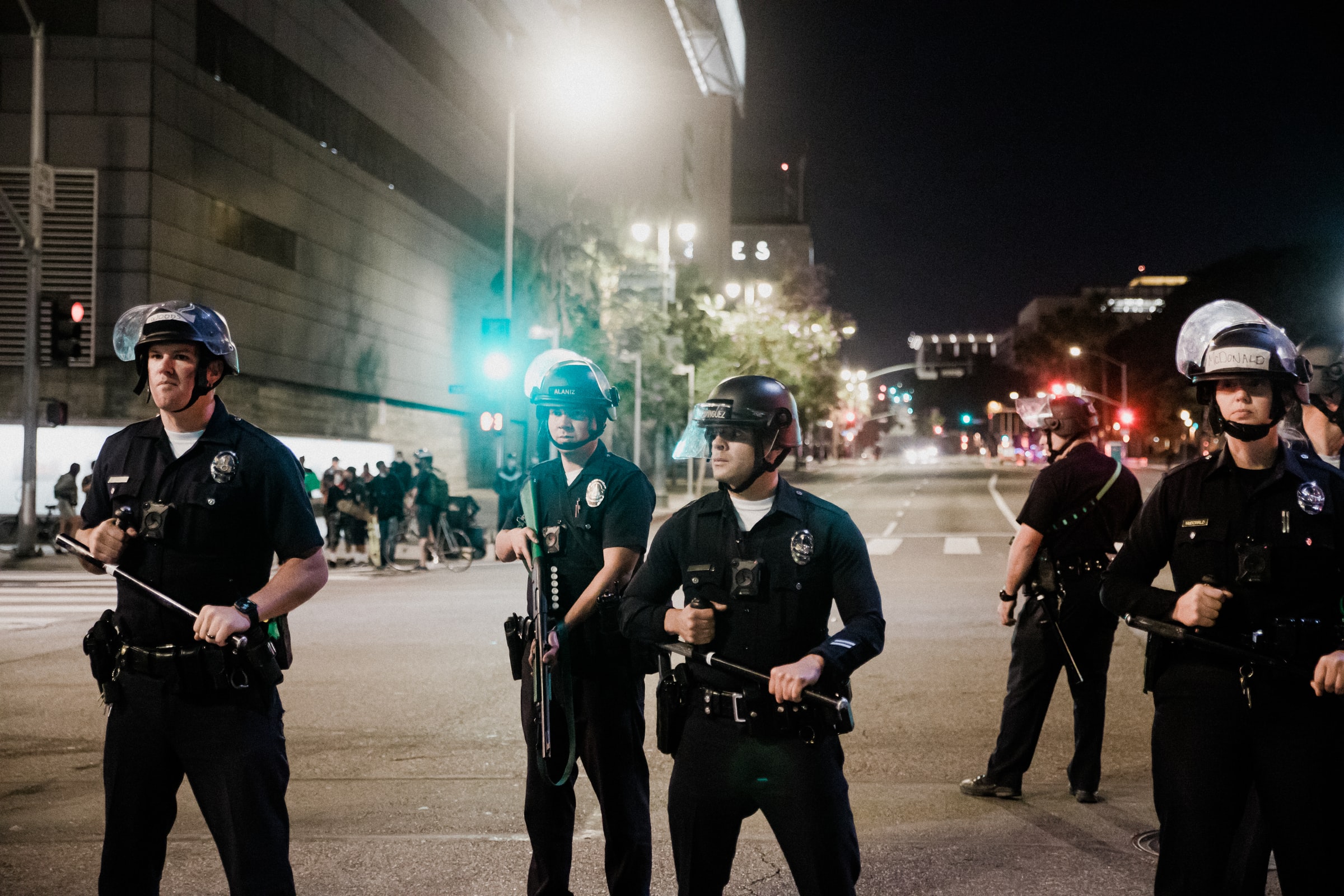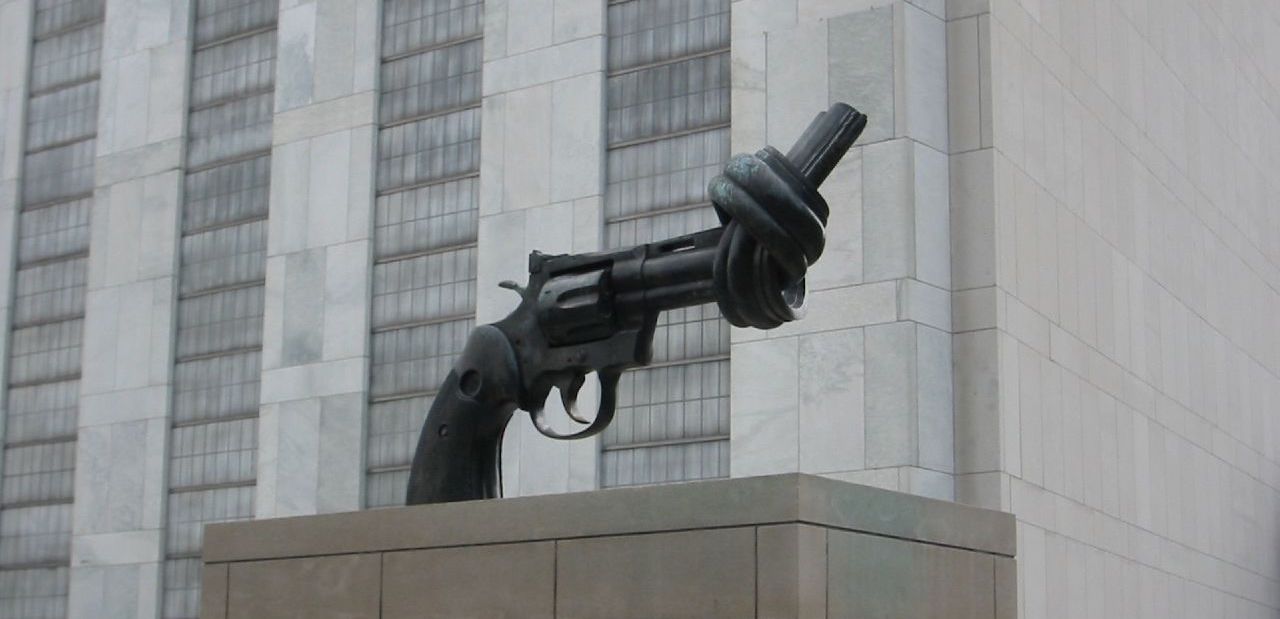Demilitarizing Security: Between Orcs and Hobbits

By Joel Petersson Ivre
Contributor
26/6/2020

What makes you safe? How do you sleep soundly at night, and what keeps you up? For the last few months, the following things regularly keep me up at night:
At 1 am, I have tossed and turned, thinking about where next month’s rent is going to come from.
At 3 am, I have sat polishing my CV before sending it out into some online job portal, never to be heard from again.
At 5 am, I have got out of bed to kill the cockroach that crawled into my basement apartment and over my hand.
I tell you this, not to elicit sympathy for my living situation (which is improving by the way), but to make a simple point: money, employment, and clean living conditions, represent security to me, just as they do to billions of people around the world.
Let me also point out that after three years in Seoul, South Korea, the thought of the thousands of North Korean artillery guns trained on the northern part of the city (where I live), has never once stirred me from my sleep.
***
Security is a tricky concept. Conventional wisdom in international relations holds that states are like people. They want to survive. The best way to do that is to invest resources in their militaries, because that can protect them from the largest threat to their survival: other states and their militaries, creating a perpetual arms race.
Danish political scientist Ole Waever explained that “military threats have been primary in the past because they emerged ‘very swiftly’ and with ‘a sense of outrage at unfair play;’ if defeated, a state would find itself laid bare to imposition of the conqueror’s will.”
Four decades have passed, but nations have yet to recover from this Cold War hangover; security is still mostly a military issue. Meanwhile, other problems, like poverty, have become an issue of economic security. Employment is “job security.” Having enough to eat is a matter of “food security.” Even activist organizations like the Metta Center for Nonviolence describe things like building cooperation and trust as “alternative security.”
Poverty is an issue of “economic security.” Employment is “job security.” Having enough to eat is a matter of “food security.”
This isn’t just semantics – the primacy of military security means that responses to alternative security issues often become militarized, even when militarization is not a sensible approach.
Before I take that line of thought further, I should explain what militarization means, because the term is a misnomer: it is easy to be misled by the “military” part — which suggests arms and guns and lockstep-marching army boots — and ignore the “-ization” suffix, which suggests a process toward a violent end.
Militarization, wrote German historian Michael Geyer, is “the contradictory and tense social process in which civil society organizes itself for the production of violence.” A society that has perfected this process is a militarized society. A society that has reversed this process is a demilitarized society.
The best example of a completely militarized society that I can think of comes from the Warhammer gaming franchise. It features a race of green-skinned brutes called “orks” whose entire civilization revolves around the search for the next big fight. The entire franchise’s catchphrase “In the grim darkness of the far future there is only WAR” describes a dystopian and violent universe of complete militarization.
The “orks” are of course a satirical take on J. R. R. Tolkien’s orcs, singularly vicious creatures, bent only on war and destruction, seemingly lacking even a single redeeming trait.

Orcs
Tolkien’s hobbits, by contrast, lead a peaceful pastoral existence among gently rolling hills in the beautiful Shire. War and violence are foreign concepts to them, and something they know only from stories passed down through generations.
Real societies exist somewhere in between orcs and hobbits. A society as violent as that of the orcs would quickly tear itself apart; a society as peaceful as that of the hobbits would quickly fall prey to ravaging neighbors.

Hobbits in The Shire
In the real world, the difference between militarization and demilitarization is one of degree, not of kind. Sweden, for example, has no alliances, a small standing army with a limited conscription system supported by low levels of military spending, and hasn’t been at war for 200 years. It is obviously less militarized than South Korea, which maintains a large standing army, a mandatory conscription system, and is technically still at war.
But Sweden is still the world’s 16th largest arms exporter, according to the Stockholm International Peace Research Institute, a think tank that collects data on arms exports. Swedes — and I am guilty of this myself — like to depict ourselves as a peace-loving and neutral arbitrator in international politics, but the reality is more complex. In Sweden, any suggestion that the country should stop producing or exporting top-line JAS 39-Gripen fighter jets is immediately met with criticism for not caring about GDP, jobs, or side-benefits from technological innovation.
Of course, a Swedish policymaker determined to have the country live up to its peace-loving self-image could put forward a proposal to convert the Swedish defense industry into a civilian one, maintaining both GDP, jobs, and innovation. (This was in fact suggested in the 1980s, but nothing ever came of it.) It goes to show that even comparatively demilitarized societies can convince themselves that militarization is necessary for their prosperity.
***
A society’s degree of militarization is not only a problem because it produces violence, but because it makes violence take precedence over non-violence, even when it should not. Even hobbits must fight sometimes, but militarization creates the perverse tendency to apply violent logic to issues that cannot, or should not, be solved with violence.
The United States is an instructive example. Its foreign military interventions — carried out in the name of national security — have created a feedback loop that re-injects militarized personnel back into its own society, especially its police force.
Author Stuart Schrader recently argued in The Guardian that throughout American history, “distant lands, colonial occupations and theaters of war have served as crucibles for testing and advancing policing techniques.” Researchers at the Marshall Project say that 19% of American police officers are veterans, as opposed to 6% of the population at large.

Riot police in Los Angeles
These officers and their civilian colleagues — through legislation like the 1033 Program— are equipped with military-grade weapons to fight the War on Drugs. The contract between the Defense Logistics Agency and the purchasing state even says that the equipment “must be placed into use” within a year of purchase or be forfeited. This “use it or lose it” condition incentivizes police officers, already trained to act like soldiers, to use violence.
Seymour Melman, a prominent peace activist and former Professor of Industrial Engineering at Columbia University, used the term “trained incapacity” to describe the inability of individuals trained in the American military-industrial complex to apply their skills to civilian purposes. An engineer who has programmed weapons targeting systems purchased through lucrative (and often inflated) government contracts, is not well-suited to work in civilian sectors.
Similarly, a soldier who is trained to identify and eliminate targets is not easily retrained to serve and protect citizens, and many police officers receive training that produces this “warrior” mentality, according to a report from the American Civil Liberties Union (ACLU). When all you have is an automatic rifle, every problem looks like a target. Add to that institutionalized racism, which primarily paints black men as targets, and it’s easy to understand the disturbing fact that being killed by police officer is a leading cause of death for black men in the United States.
The War on Drugs is a war that never had to be a war in the first place; the underlying issue — drug use — is not a military problem. The same report from the ACLU stated that “the War on Drugs has destroyed millions of lives, unfairly impacted communities of color, made drugs cheaper and more potent, caused countless deaths of innocent people caught up in drug war-related armed conflict, and failed to eliminate drug dependence and addiction.” The militarized response is to blame for this.
The War on Drugs is a war that never had to be a war in the first place.
It’s also worth pondering that in 2019, US military spending made up 38% of the global total, according to data published by the Stockholm International Peace Research Institute (SIPRI). Yet none of that investment prevented the country from being crippled by the coronavirus, or protected the 120,000 American lives it’s claimed. (Meanwhile, Iceland, a country without an army, has basically eliminated the disease.)
Ironically, one of the first large cluster infections occurred among the crew of the USS Theodore Roosevelt, an aircraft carrier, the ultimate symbol of American military might. The infection forced the ship to dock and put its crew into land-based quarantine, effectively disabling the multi-billion-dollar warship for several weeks.
***
So how does one go about demilitarizing security?
A first step would be to frame “alternative” security issues as “primary” security issues, thus putting them on par with military security issues. For example, had governments understood the Spanish Flu as a national security issue, rather than a public health issue, they may have left us with historic lessons and institutional capacity powerful enough to recognize the implications of another global pandemic. Researchers had in fact been raising alarms on this for years. Bill Gates notably made the point in a TED talk that it was not a question of if but when a new disease would spread beyond the capacity of existing public health measures to control it.
“Alternative” security issues should be framed as “primary” security issues, thus putting them on par with military security issues.
Imagine what the United States could have gained by investing in pandemic preparedness, as opposed to the largely useless Transport Security Administration (TSA), which was a part of the militarized response to terrorism after 9/11. The TSA, essentially a beefed-up version of airport security, was a display of force meant to create the illusion of security, but not much else. The invasion of Afghanistan should probably have been better conceived as a limited military operation at most, instead of the two-decade occupation it resulted in. John Mearsheimer, Professor in International Relations at the University of Chicago and the foremost expert on traditional security understood this. In November 2001, he wrote in the New York Times against proceeding with a ground invasion of Afghanistan, saying “massive military force is not a winning weapon against these enemies. It makes the problem worse. In contrast, a strategy that emphasizes clever diplomacy, intelligence-gathering, and carefully selected military strikes might produce success.” He suggested instead suborning Afghans to overthrow the Taliban. He was also a critic of the Iraq-invasion, which failed to achieve its goals, and spawned a counterinsurgency that had to be put down at great cost.
South Korea provides an interesting counter-example on how to handle a pandemic. In many ways, the country is an embodiment of traditional security issues and militarization. Caught like “a shrimp between two whales,” the country has to maintain a precarious balance between its economic reliance on China, and its military reliance on the United States. To the north lies its rogue nuclear-armed neighbor, and conscription is mandatory for all men. This means that nearly half the population will, at some point in their life, become militarized.
But South Korea is also one of the few countries that prepared successfully for the low-probability, high-risk event of the coronavirus pandemic. Spurred by its experiences with previous epidemics like SARS in 2003 and MERS in 2015, South Korea recognized the security implications of a full-blown pandemic, but it never seems to have crossed the minds of South Korean decision-makers to militarize the response. On the contrary, in an interview with Korea Times, Professor Moon Chung-in, the national security adviser to the Korean President, remarked:
“What is really remarkable about this spread of the pandemic is that it has changed the way we think about national security and foreign policy. Before the coronavirus, we thought about our security in terms of military and economic security. We rarely talked about human security, biological, or ecological security. But the sudden outbreak of COVID-19 changed our way of thinking about security in such a way that human security and biological security can be more critical than military and economic security.”
“COVID-19 changed our way of thinking about security in such a way that human security and biological security can be more critical than military and economic security.”
But the change that Moon is talking about actually took place before the pandemic even broke out. South Korea’s success did not happen by coincidence or luck. Immediately following its considerably less laudable response to the MERS epidemic in 2015, South Korea purposefully moved to reform its laws and institutions, to prepare it for the next outbreak. Through extensive infection tracking, Korea has largely contained the outbreak at manageable levels. It also built on what was already there. Since at least the turn of the millennium, the country has invested significant amounts in building up its biotech and medical device sector.

This is why demilitarizing security is not some abstract ideal. It’s an important step towards ensuring the type of security that actually matters to people in their everyday lives. As South Korea’s experience shows, the best way to demilitarize security is to not militarize it in the first place.
When it comes to demilitarizing already militarized issues like policing, creative thinking is essential. One approach is to try to reframe the issue: in 2018, the American Public Health Association classified police violence as a public health issue. In fact, much of the work that police do can be done by social workers or public health professionals. When project RIGHT Care in Dallas sent social workers to mental health distress calls instead of police officers, the results were telling. Business magazine Fast Company reported: “Between pre-launch and 2019, admittance to the ER decreased by 9% in the targeted zip codes, while it increased in the rest of the city. Arrests dropped by 8%, while they went up in neighboring ones of a similar socioeconomic status. Just 2% of the RIGHT Care calls led to arrests, and the repeat call-rate is less than 7%.”
One could argue that there are many things police can do that mental or public health workers can’t. This is true but misses the point: one should first identify the security issues that police are unsuited to deal with and then invest the power to deal with those issues into a more appropriate body. “Defund the police” is a clumsy slogan but gets to the heart of the matter: take resources from the police and divert them to funding programs like RIGHT Care. In other words, demilitarization starts from recognizing the limits of militarized security measures, not arguing about the limits of “alternative” security measures.
Demilitarization starts from recognizing the limits of militarized security measures, not arguing about the limits of “alternative” security measures.
Stated more broadly, demilitarizing security means recognizing that security is rarely military in character and acting in accordance with that recognition. There is no perfect solution to every security issue, of course. For example, Article 76-2 of South Korea’s Infectious Disease Control and Prevention Act gives the government sweeping powers to collect personal information. This has troubling implications for the exercise of government power, as well as policing. Norway recently stopped its coronavirus contact tracing app after criticisms about flaws in its data protection protocols. As we change our ideas of what security means in the 21st century, difficult conversations need to take place about trade-offs and compromises.
***
Si vis pacem, para bellum — “If you want peace, prepare for war” may or may not have been true in Roman times, but in the 21st century, we should strive for a more enlightened approach. A society that prepares itself for violence is more likely to resort to it.
If militarization is the social process in which civil society organizes itself for the production of violence, then demilitarization is the social process through which society organizes itself to abjure violence. Policing is probably the most clear-cut example of where a society has to deal with this choice between militarization and demilitarization. Funding riot gear is a way to prepare for violence; funding community policing initiatives and outreach programs is a way to preempt it.
But, as activist groups like Critical Resistance have argued, an act of true demilitarization is to divert resources away from the police force entirely, into community-oriented projects that focus on health, education, and affordable housing. Only decreasing funding for the police does not cut it. Only increasing funding for community projects won’t cut it either. It is the simultaneous increase in spending on alternative security measures and decrease of police funding that increases security, while at the same time demilitarizing it.

A demilitarized society does not have to look like the Shire in Tolkien’s Lord of the Rings. In fact, the hobbits in Tolkien’s story were free to lead their peaceful lives because — unbeknownst to them — their borders were kept safe by rangers. When the rangers left to fight the War of the Ring, they left the land unprotected, and roaming bandits invaded the Shire. When the four hobbits returned back home from their adventures, they had to rely on their military experience to organize their fellow hobbits in resistance and drive out the invaders. Clearly, some crises require a militarized response.
But militarized methods used to fight external military threats are wholly unfit for dealing with almost any other security issue. A demilitarized society is not one that has abolished its military, but one that does not treat all its security crises as though they were military in nature. I don’t think anyone would disagree that school budgets are better spent on school lunches than the grenade-launchers a Los Angeles school-police force purchased. Yet, such is the corrosive influence of militarization that we are inclined to treat any crisis like a war, even though economic, social, and health insecurity are not enemies that can be fought on a battlefield.
***
At 6 am, an automated message from the Korean Center for Disease Prevention wakes me up to let me know that my test for COVID-19 came back negative.
I breathe a sigh of relief and go back to sleep.
